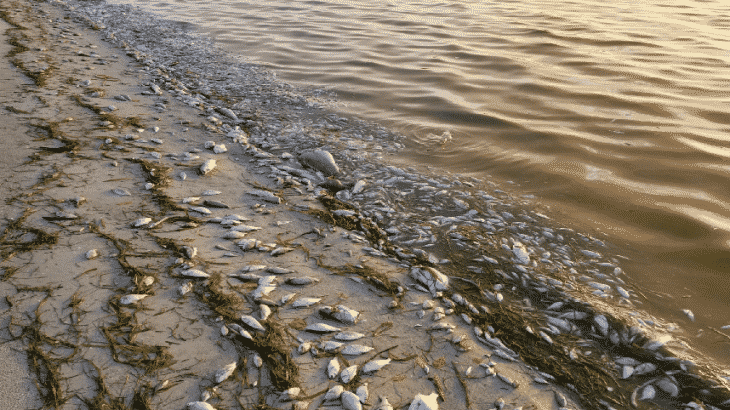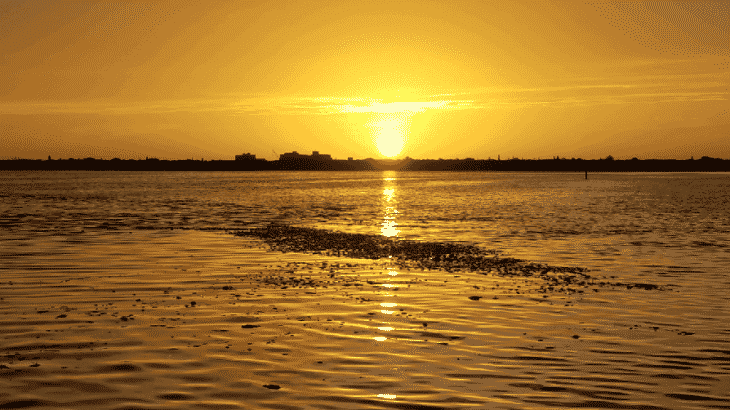Red tide is hitting Florida’s Gulf Coast hard, leaving locals and visitors outraged by the masses of dead fish, turtles and other sea life washing up on shore. It’s hard not to question where this deadly and potent algae comes from. It’s hard not to feel strong emotions when you see dead wildlife lining the most loved beaches, not to mention the looming stench in the surrounding areas. Many are wondering, what is causing the worst red tide in Florida in almost ten years, pollution or nature? And how can you stop it from happening?
WARNING GRAPHIC: Graphic images of dead wildlife are in the video below
Is red tide natural? Is it the government’s fault? Is Lake Okeechobee the cause?
Many are turning to news outlets for the hard-hitting facts, but it gets pretty confusing with articles like this one from NBC simultaneously talking about red tide in the Gulf of Mexico caused by Karenia brevis, and the mass growth of blue green algae or cyanobacteria in Lake Okeechobee caused by runoff from fertilizers and other pollutants.
What is red tide?
According to the National Oceanic and Atmospheric Administration (NOAA), red tide is a naturally occurring harmful algae bloom. Red tide is caused by harmful microscopic algae and it occurs all over the world, but in the Gulf of Mexico the particular algae that causes red tide is called Karenia brevis.
“Harmful algal blooms, or HABs, occur when colonies of algae—simple plants that live in the sea and freshwater—grow out of control while producing toxic or harmful effects on people, fish, shellfish, marine mammals, and birds.” – NOAA
“This algae can grow rapidly in the perfect conditions like the presence of the K. brevis organism in the water column, a major nutrient source and wind and/or water current movement that condenses the K. brevis population into an increasingly denser cluster,” according to Start1.org.
Does Lake Okeechobee cause red tide in Florida?
Many Florida residents are expressing their outrage to their local representatives and the U.S. Army Corps of Engineers because they believe the Gulf Coast red tide is due to pollution in Lake Okeechobee and subsequent water releases (which the government controls). However, Mote Marine Laboratory & Aquarium located right in Sarasota, FL, claims something different:
“In contrast to the many red tide species that are fueled by nutrient pollution associated with urban or agricultural runoff, there is no direct link between nutrient pollution and the frequency or severity of red tides caused by K. brevis. Florida red tides develop 10-40 miles offshore, away from man-made nutrient sources. Red tides occurred in Florida long before human settlement, and severe red tides were observed in the mid-1900s before the state’s coastlines were heavily developed. However, once red tides are transported inshore, they are capable of using man-made nutrients for their growth.”
And again in SunshineStateNews.com’s summary of University of South Florida’s study of Florida’s red tide, “USF researchers confirm that red tide occurs naturally in the Gulf of Mexico—certainly not close to shore and never in lake water.”
So what is causing the red tide along Florida’s West Coast?
Red tide in Florida is caused by K. brevis algae blooms that start miles offshore in the Gulf of Mexico.
According to Start1.org, the red tide originates 10 to 50 miles offshore along the continental shelf. Some scientists think the Loop Current, which brings Caribbean seawater to Florida’s West Coast may initiate a bloom by causing an upwelling of nutrients as the force of the current surges against the shelf, thus creating favorable growing conditions. The red tide is then transported into the nutrient-rich shallow waters by winds and/or currents, where it continues to multiply to harmful levels.
Other scientists like Dr. Richard Stumpf, believe that a summertime wind shift in the Gulf redirects the outward flow of the Mississippi River, pushing the water towards the West Coast of Florida. The nutrients, both natural and man-made, that travel downstream in the Mississippi River plume may be the stimulant that leads to the growth of the red tide bloom.
How can you stop red tide?
Unfortunately, you cannot.
The Florida Wildlife Commission (FWC) claims, “Control of Florida red tides is not a simple issue. The harmful effects of a red tide are caused by toxins released when the organism dies. Potential controls must not only kill the red tide organism but also eliminate the toxins from the water. To date, this has not been possible; however, researchers are identifying ways to reduce shellfish toxicity. In addition, any control strategy must not harm the environment. […] Presently, there is no practical and acceptable way to control or kill red tide blooms.”
While there’s no way to prevent red tide, this does not mean there’s nothing you can do to help the ocean and show all its inhabitants some love. Here are three simple ways you can start saving the ocean today:
- Choose sustainable seafood when buying seafood in your stores or restaurants: Sustainable foods mean that they are harvested in ways that do not negatively impact the environment. They are practices that can be sustained long term, without destroying the species, and also maintaining the well being of the fishing economy.
- Ditch plastic straws and use reusable instead: Actively refuse a straw when dining out unless it’s biodegradable, take your own reusable straw or drink from the cup.
- Choose ocean-friendly products: Choose only ocean-safe, biodegradable products like Stream2Sea sunscreens and body care products that are not toxic to the ocean and reefs.
For more ways you can save the ocean, check out our article, 11 Ways You Can Save the Ocean From Plastic Pollution.







